Affiliate links on Android Authority may earn us a commission. Learn more.
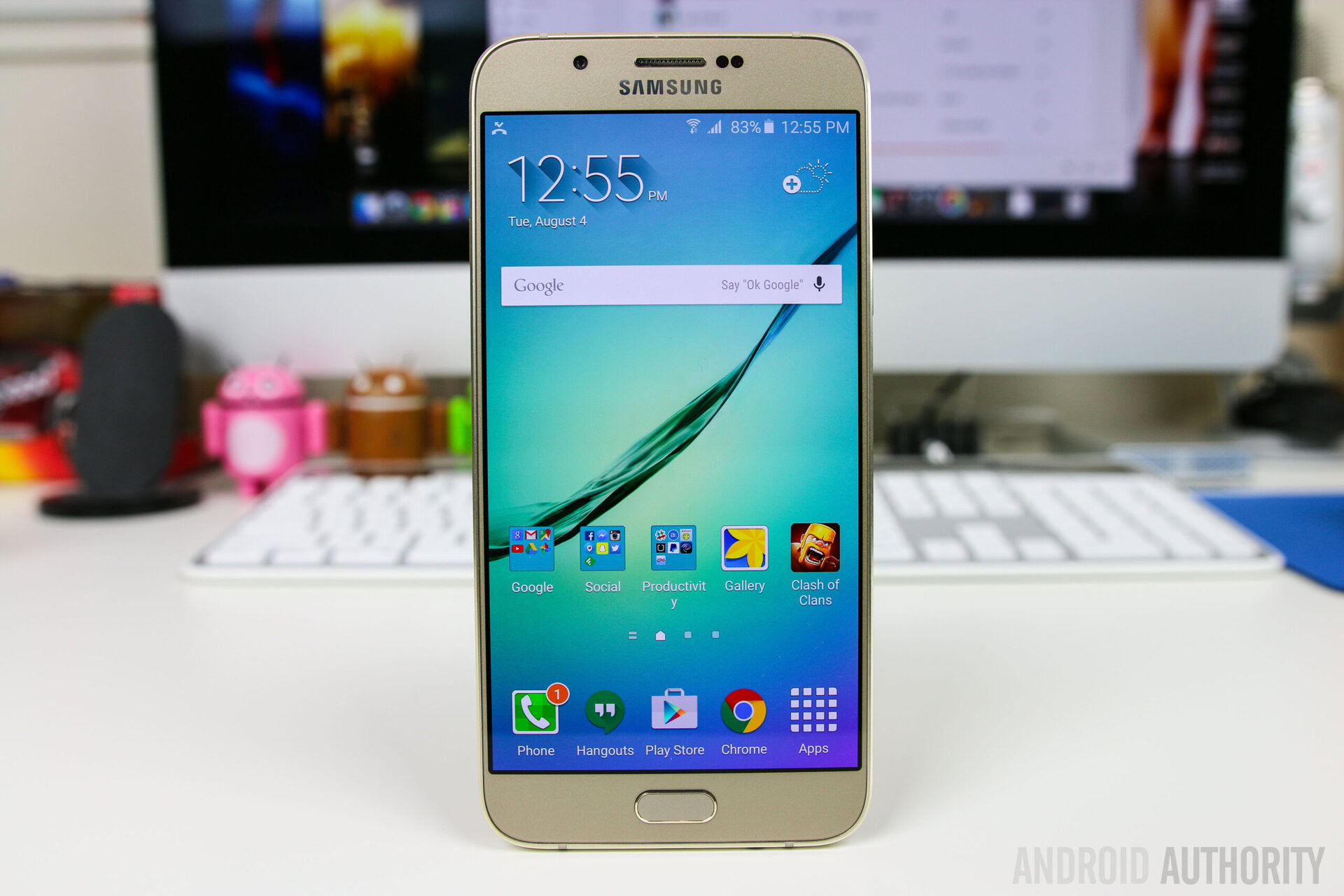
Samsung Galaxy A8 review
August 10, 2015
Samsung Galaxy A8
What we like
What we don't like
Our scores
Samsung Galaxy A8
Before Samsung made its dramatic shift to metal and glass for the Galaxy S6, the company experimented with “premium” materials in its medium range first. The use of metal began with the Galaxy Alpha, and was later extended to the Galaxy A series, with these otherwise mid-range smartphones featuring metallic unibody designs.
The latest addition to the Galaxy A lineup is bigger, but thinner and more powerful. The question is, in this highly competitive mid-range segment, is it worth the buy? We find out, in this in-depth review of the Samsung Galaxy A8!
Design
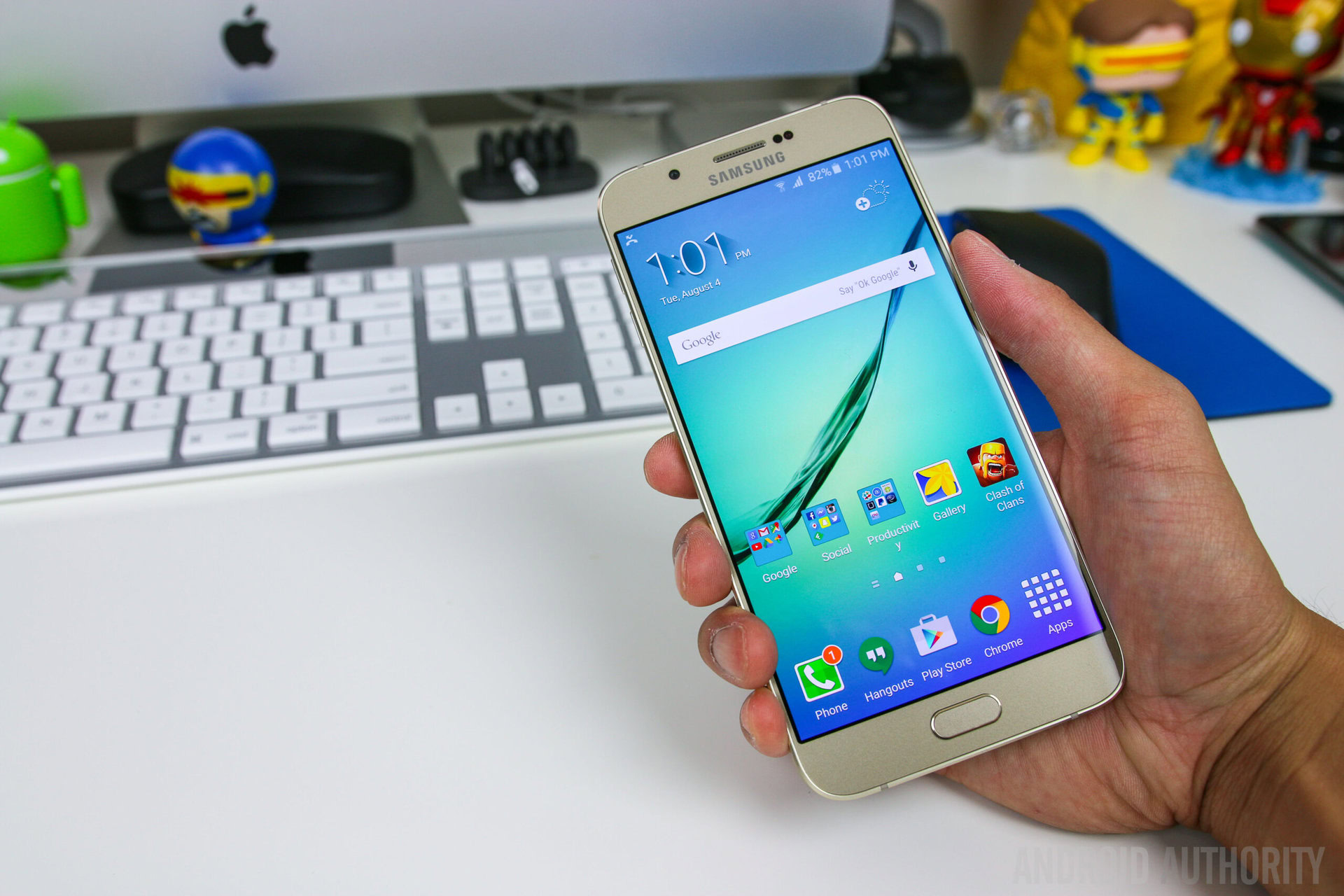
As mentioned, the marquee feature of the Galaxy A series is the full metal unibody design, and that continues with the Galaxy A8. Unfortunately, that also means the battery is not removable. Chamfered edges go around the entire frame, and the body has been mostly rounded off along the corners and the back, with the exception of the sides that feature some very prominent angles. With a thickness of just 5.9 mm, the Galaxy A8 is Samsung’s thinnest phone to date, and the device is quite light, with a weight of 151 grams, despite its metal construction.
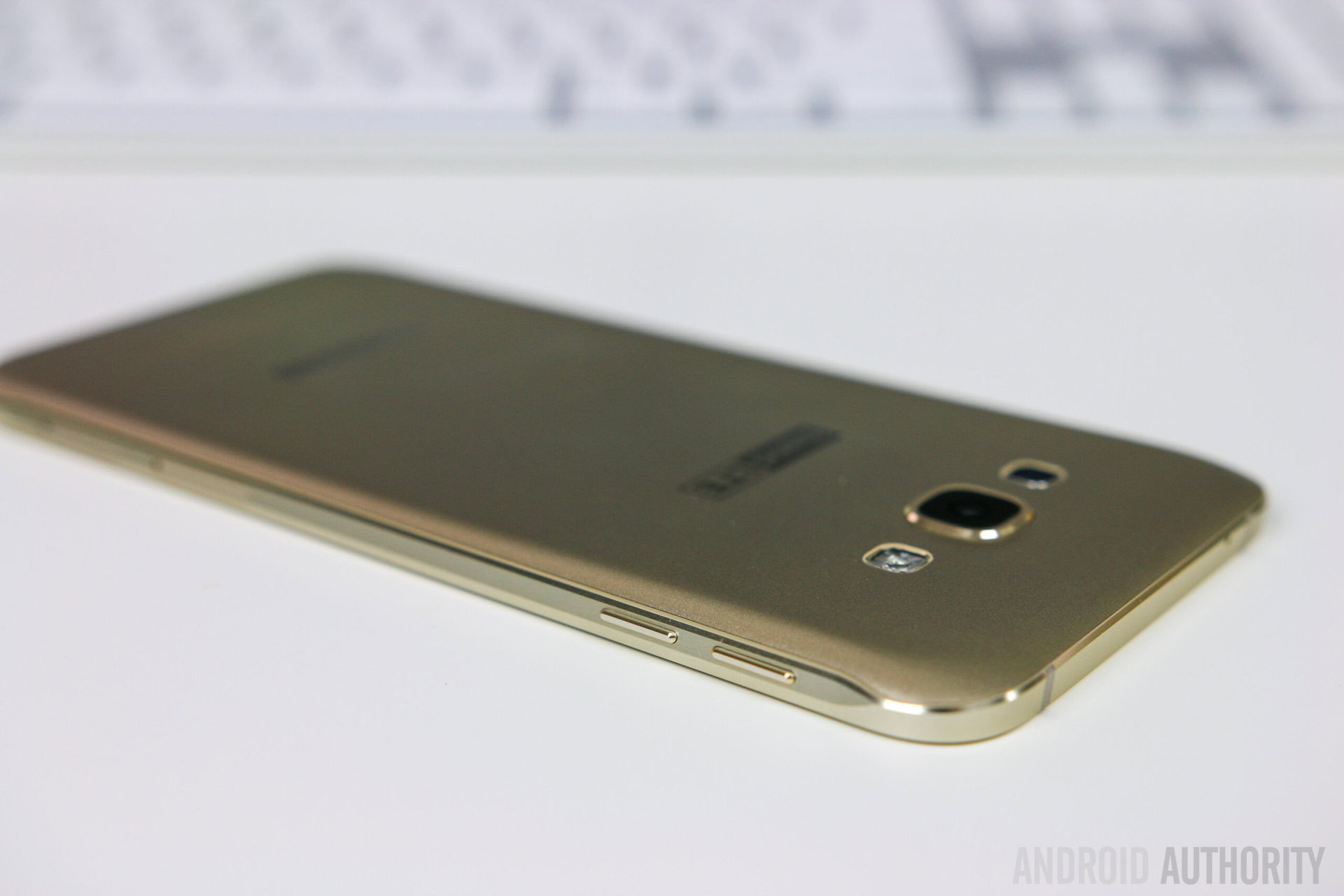
The Galaxy A8 comes with some very thin side bezels, which helps make it a little more manageable as far as one-handed use is concerned, even though it’s still a very tall phone. The metal build and extremely sleek profile is a great combination. That said, while it feels solid in the hand, the Galaxy A8 can still be pretty unwieldy at times, because of the large screen and the slipperiness of the metallic back.
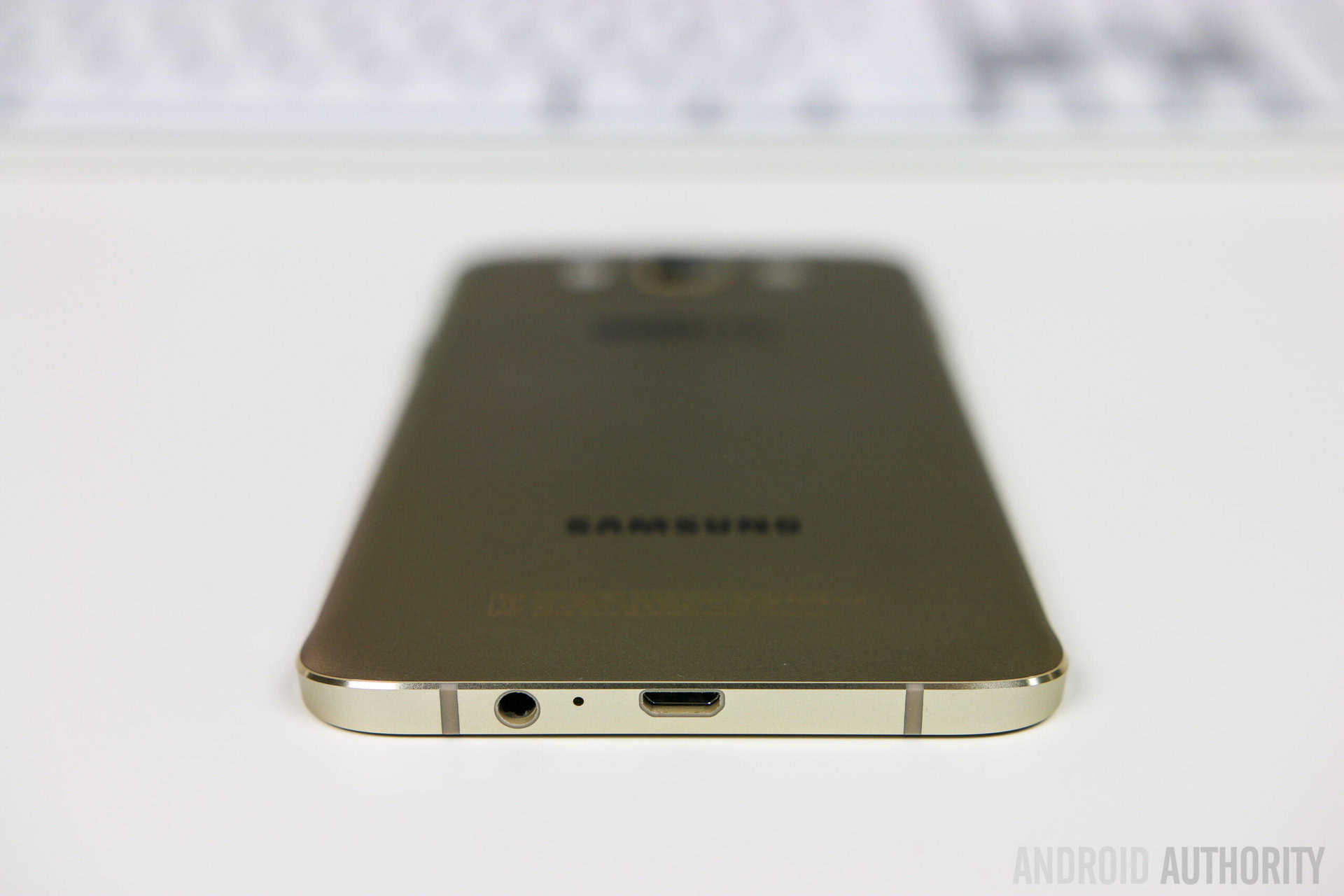
The buttons and ports are in identical locations to other Galaxy A devices, with the power button on the right, placed within comfortable reach, along with the 3.5 mm headphone jack and the microUSB port found at the bottom. The single speaker unit is placed next to the camera on the back, and the volume rocker is on the left side. It has to be said that the volume controls are towards the top, making them very uncomfortable and awkward to reach. Also on the left is the dual-SIM card slot, with the second SIM slot doubling as a microSD card slot as well. Of course, this wouldn’t be a Samsung smartphone without the signature tactile home button, flanked by the back and recent apps capacitive keys, up front.
Display

The Galaxy A8 comes with a 5.7-inch Super AMOLED display with Full HD resolution, resulting in a pixel density of 386 ppi. The large size of the display makes it great for watching videos, playing games, web browsing, and pretty much anything else you’d typically want to do on your phone. It’s got everything that we love about Samsung’s Super AMOLED panels, like great viewing angles, high brightness, good outdoor visibility, and vibrant, saturated colors that make the elements pop off the screen.
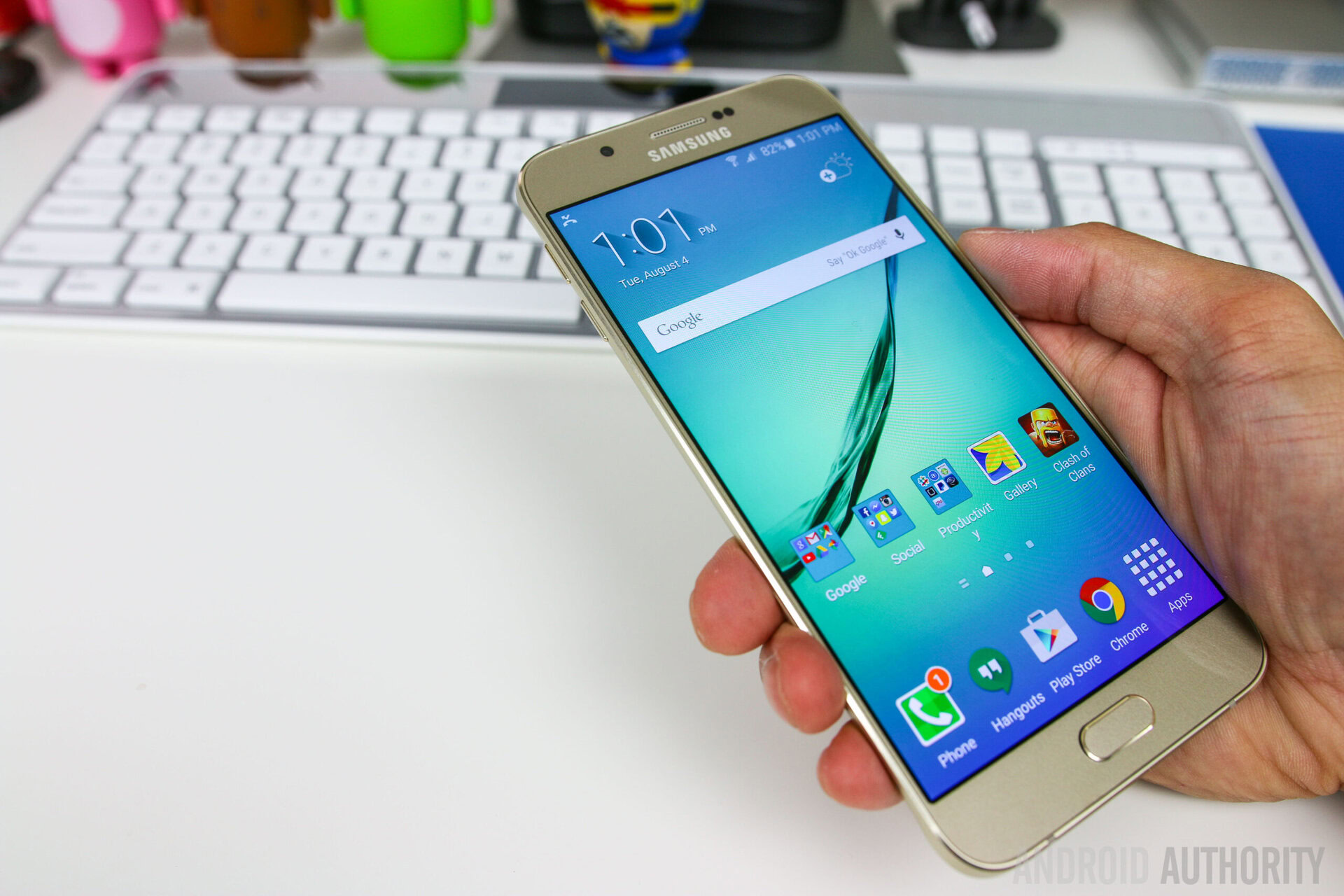
Quad HD is what may get most people excited, but 1080p is more than enough, especially when considering the mid-range nature of this phone. The display is still very sharp, allowing for a fantastic display experience when reading text and various other content.
Performance
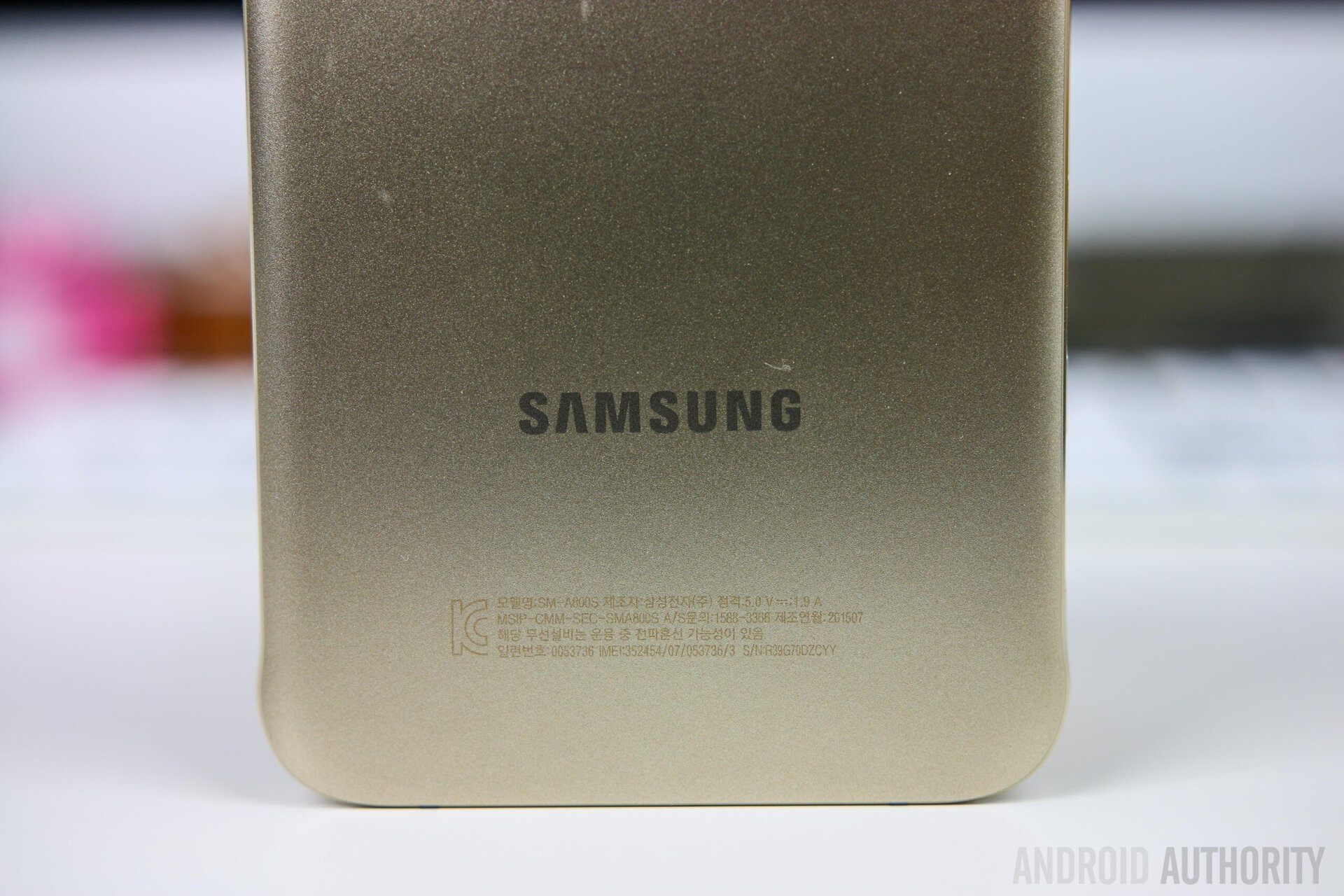
In most markets, the Galaxy A8 packs an octa-core 64-bit Qualcomm Snapdragon 615 processor, clocked at 1.5 GHz, and backed by the Adreno 405 GPU and 2 GB of RAM. However, our particular model is the Korean variant, which offers 2GB RAM but instead features an Exynos 5430 SoC. While there will be minor differences, we’d expect both versions to perform relatively similarly.
Everyday performance with the A8 was good, with everything running smoothly when browsing the web, multi-tasking, or playing graphic-intensive games.
There are some home screen stutters to be seen occasionally, especially when scrolling in and out of the Flipboard homescreen, but this is a software issue, and was also seen with the flagship Galaxy S6. Overall, the Galaxy A8 handles itself well, and in the grand scheme of things, the performance is at par with other smartphones with similar specifications.
Hardware
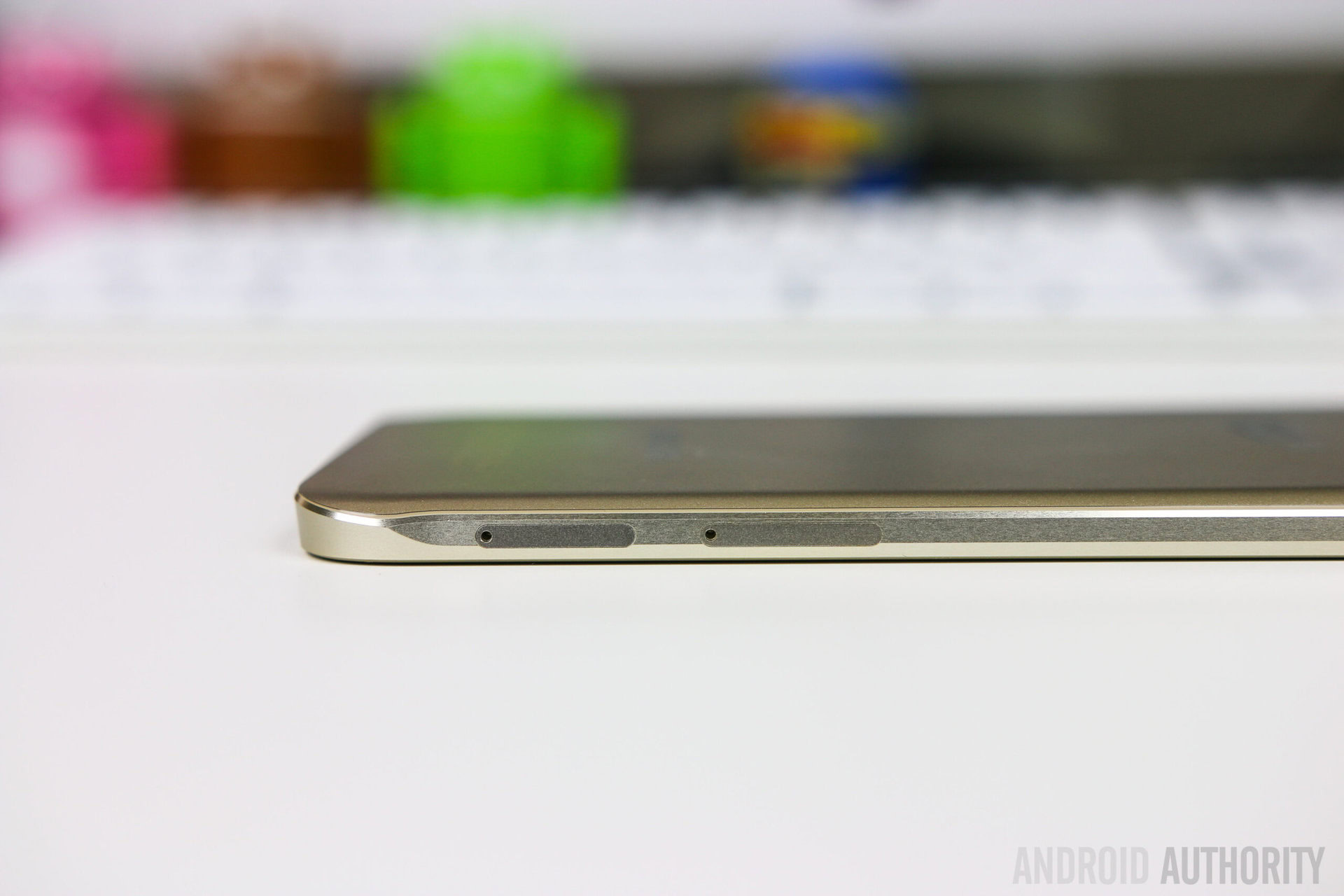
The Galaxy A8 comes with 16 GB or 32 GB built-in storage, and as mentioned, the second SIM slot can be used for expandable storage via microSD card, by up to 128 GB, leaving it on the users to choose between dual SIM or expandable storage. The device packs the usual suite of connectivity options, and while 4G LTE connectivity is available in select markets, that isn’t the case in the US, where you will be limited to HSPA+ on the AT&T and T-Mobile network.
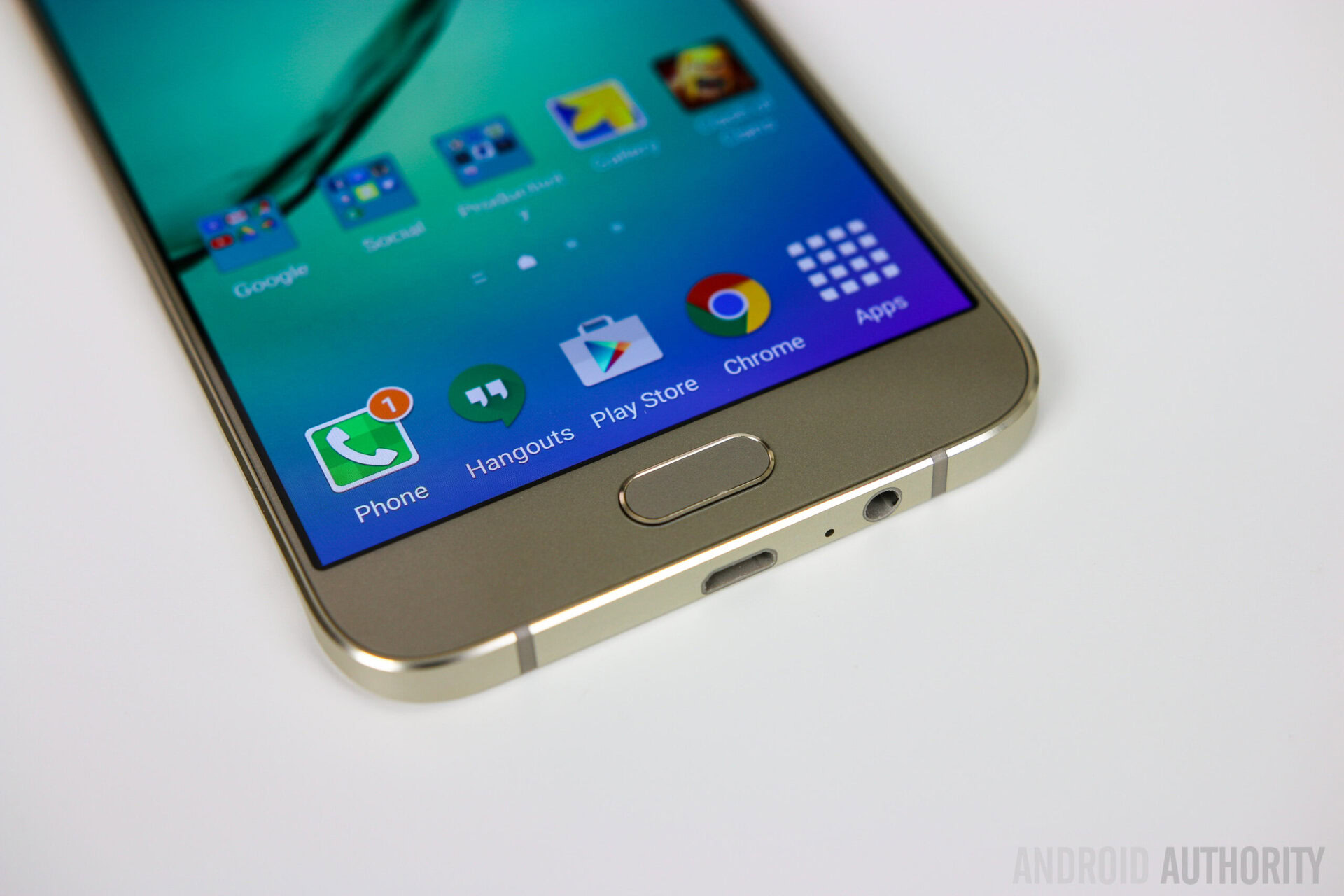
A fingerprint scanner is also integrated into the physical home button of the device, and works just as well as it does on the Galaxy S6, allowing for a quick and simple way to unlock the phone. The setup process is identical, requiring a series of repeated presses until it completely captures your fingerprint, and you have the option to store up to a maximum of four fingerprints at one time.
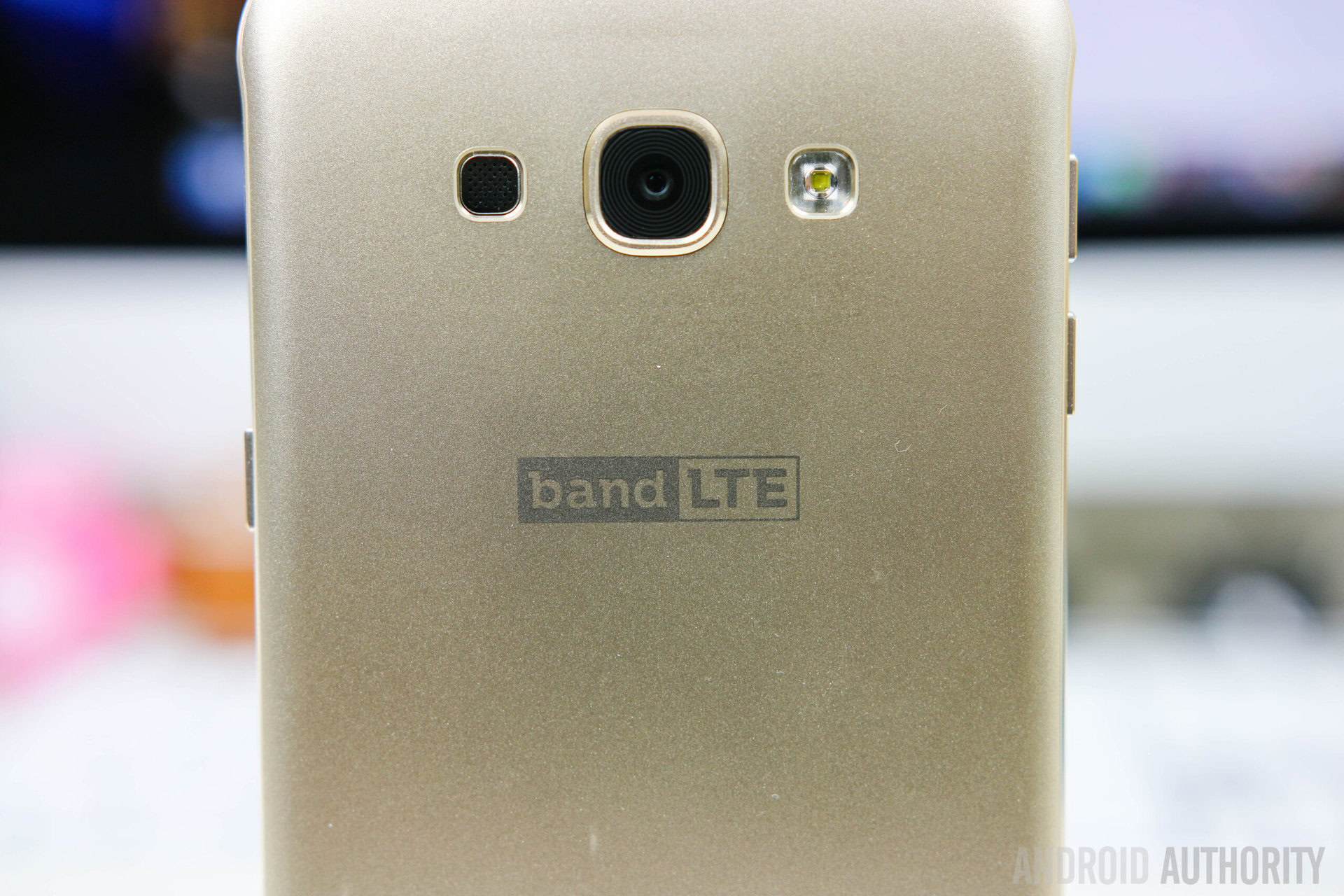
Speaker quality from the rear mounted speaker isn’t the best, as it doesn’t get very loud and can be difficult to hear in noisier environments. The sound is also somewhat tinny and hollow, and so, the media-consumption experience is definitely lacking as far as audio is concerned. As is the case with any rear speaker setup, the sound also gets muffled when the device is placed on a flat surface.
Despite how thin the Galaxy A8 is, Samsung was able to pack a large 3,050 mAh battery inside the device, and as expected, the battery life it provides is really good. One of the most impressive aspects about this battery is when the device is in the idle state, often losing just 2 to 3% of battery when the device is kept without being charged overnight. Even with heavy usage that consists of a lot of gaming and watching videos on YouTube, the device still allowed for up to 4 hours of screen-on time, and because it idles so well, I was able to stretch the standby time to over a day. With more casual usage, the screen-on time reached almost 6 hours, and no matter how heavy or light your use is, you should comfortably be able to get a full day of use, if not more, out of the Galaxy A8.
Camera
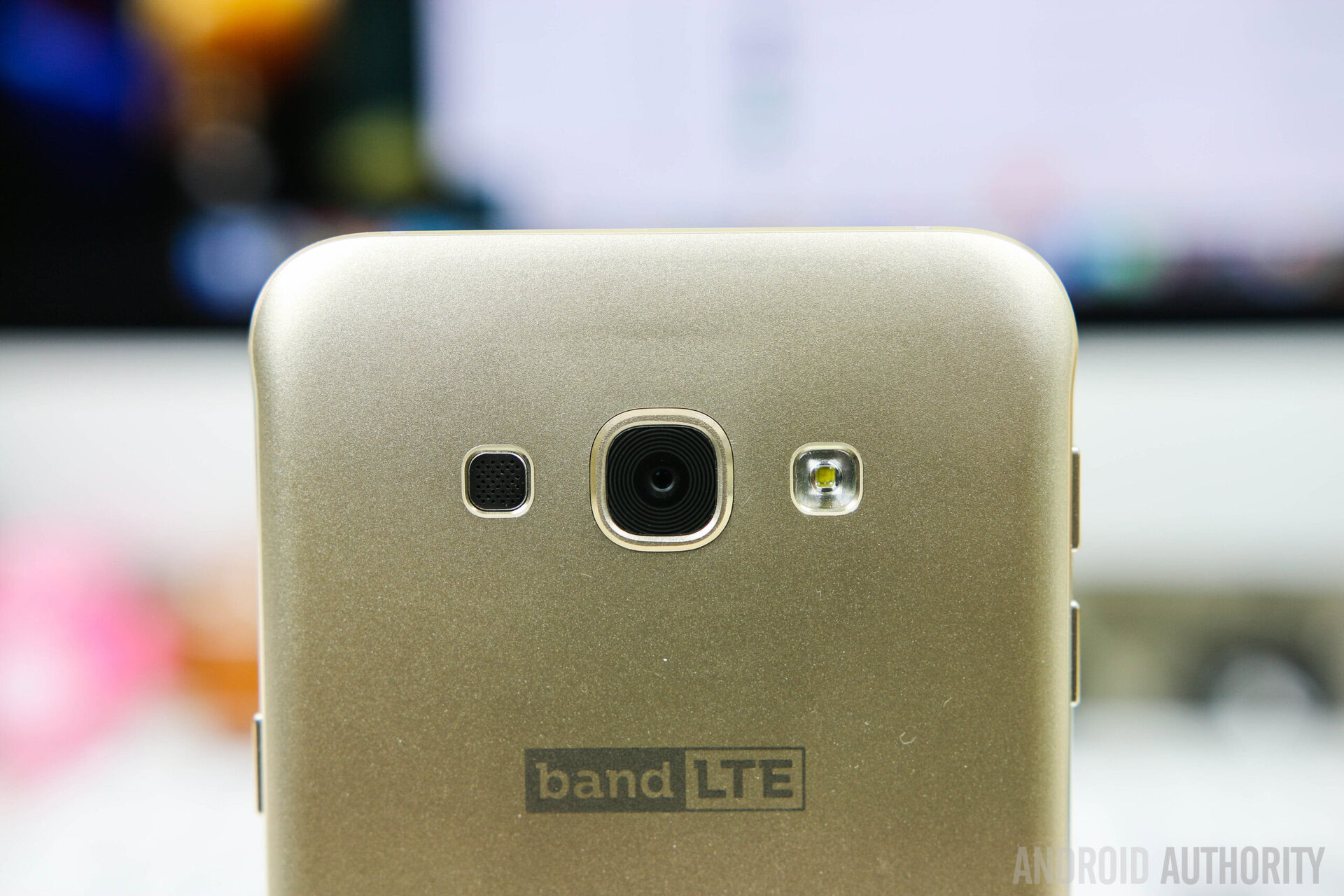
The rear camera is a 16 MP sensor with an f/1.9 aperture, just like what is seen with the Galaxy S6. The sensor uses ISOCELL technology, but there is no optical image stabilization available with the Galaxy A8. The camera can also be launched via a double tap of the home button, which quickly launches the camera app, regardless of where you are within the phone or if coming from a sleep state. The front-facing camera is a 5 MP unit with a wide angle lens that allows for some decent looking selfies, but the default beauty mode settings are a little too aggressive, and that’s something you’ll have to tone down to get a more natural looking image.
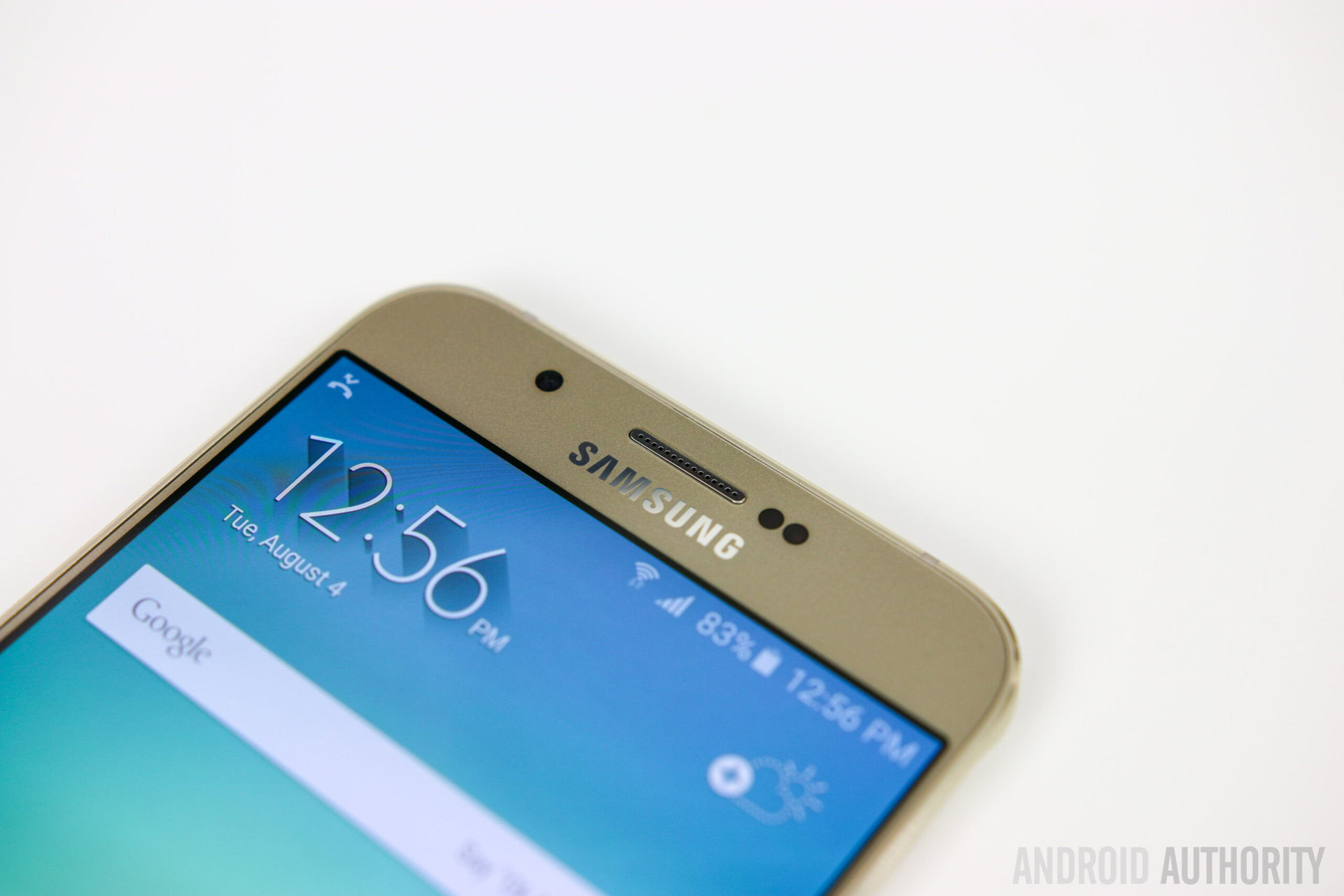
The camera interface is mostly the same as what was introduced on the S6. It’s a much cleaner and more simplified UI, that the interface on some older Samsung devices. Only a few shooting modes are pre-loaded – including panorama, continuous shot, night, and Pro, which offers full manual controls. Users have the option to download other modes separately.
The main difference between the A8 and the S6 is the absence of HDR Auto, and the HDR toggle is buried in with the rest of the shooting modes, making the experience of switching between HDR and Auto mode a little bit clunky and slow.
What isn’t clunky and slow, however, is the shutter speed. It’s nice and quick, making it really easy to snap photos, and resulting in pretty good images. They’re very sharp and with plenty of detail, especially in above-average lighting conditions, and there’s still a good amount of clarity even when zoomed in. The images are colorful and saturated as you would expect from a Samsung camera, making for some very crisp and vibrant images. Dynamic range is already pretty good in normal mode, but HDR, should you ever need it, does a great job at introducing some extra detail and color without appearing overexposed or unnatural.
Even without OIS, the camera does really well in low light conditions, and the f/1.9 aperture obviously makes a huge difference here. Images still exhibit a nice amount of color and sharpness, and there’s not a whole lot of noise reduction going on in post-production, which helps to maintain a respectable level of detail.
Software

On the software side of things, the Galaxy A8 runs Android 5.1.1 Lollipop, with Samsung’s typical TouchWiz interface on top. This the much leaner version of TouchWiz that was first seen with the Galaxy S series flagships, and as such, there is a lot less Samsung bloatware and unnecessary features. Since this review unit is from SK Telecom, a South Korean network carrier, there are quite a lot of SK Telecom apps pre-installed though.
Many of Samsung’s popular, and arguably more useful, features are present. This includes multi-window for split-screen multitasking, and smart gestures, like palm swipe to capture a screenshot or flipping the over the phone to mute phone calls and alarms. The new themes engine that was first introduced on the S6 is also included on the Galaxy A8, to help you easily customize and change the overall look of the UI if you’re not a fan of the blue and green Touchwiz color scheme. The theme store is constantly growing and is much more robust now than it was during its early days, and with so many different styles available, you should be able to find at least a few that will suit your taste.
Specifications
| Display | 5.7-inch Super AMOLED display Full HD resolution, 386 ppi |
|---|---|
Processor | 1.5 GHz octa-core Qualcomm Snapdragon 615 Adreno 405 GPU Korean model: Exynos 5430 SoC, Mali GPU |
Storage | 16/32 GB expandable via microSD up to 128 GB |
RAM | 2 GB |
Connectivity | Wi-Fi 802.11 a/b/g/n Bluetooth 4.1 GPS + GLONASS NFC microUSB 2.0 |
Software | Android 5.1.1 Lollipop |
Camera | 16 MP rear camera with LED flash 5 MP front-facing camera with wide angle lens |
Battery | 3,050 mAh |
Colors | Pearl White, Midnight Black, Champagne Gold |
Dimensions | 158 x 76.8 x 5.9 mm 151 grams |
Gallery
Pricing and final thoughts
The Samsung Galaxy A8 is currently available in select markets like China, India, and South Korea, priced at around $500. If previous A series phones are any indication, it’s highly unlikely that the Galaxy A8 will officially make its way over to the US. The cost to import one through sites like eBay will run you upwards of $800, at which point you’re obviously much better off picking up a flagship, or one of the many affordable mid-range devices that are available through official channels.
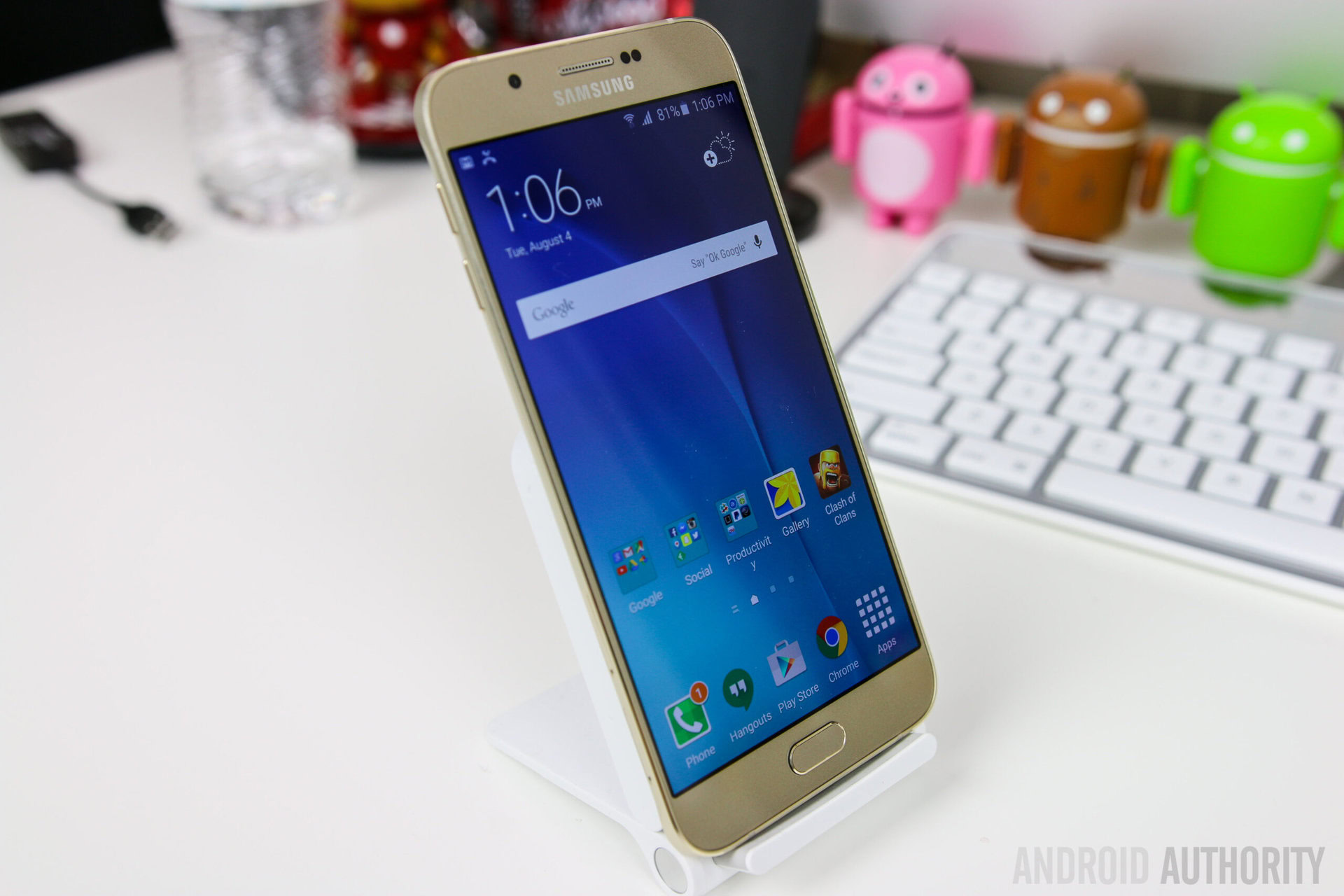
So there you have it for this in-depth look at the Samsung Galaxy A8! This is a solid mid-range device, that gets a lot of things right, particularly when it comes to build quality, the camera experience, and battery life. The price is a point of contention though, as there are plenty of fantastic mid-range smartphones that are hitting the sub-$300 mark. While the Galaxy A8 is by no means a bad buy, the premium you will have to pay for this device can be a tough pill to swallow.